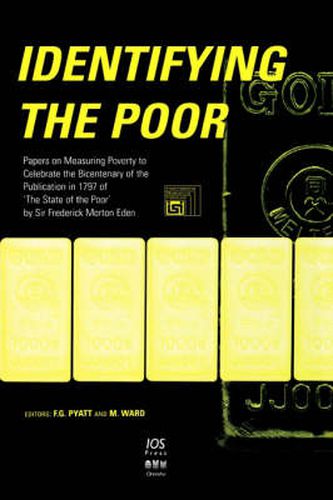Readings Newsletter
Become a Readings Member to make your shopping experience even easier.
Sign in or sign up for free!
You’re not far away from qualifying for FREE standard shipping within Australia
You’ve qualified for FREE standard shipping within Australia
The cart is loading…






Poverty has long been recognized as a socio-economic problem. Objective analyses of a quantitative nature are a crucial prerequisite to understanding the nature of poverty, where social and personal sentiments play a role of their own, next to political considerations. One of the first comprehensive attempts to assess the nature of poverty with a view to alleviate its consequences was a three volume series by Sir Frederick Morton Eden in 1779 titled The State of the Poor. Next to an evaluation of Morton Eden’s significance then and now, this book discusses how perceptions of poverty have developed since that time. A proper understanding of causes of poverty, indispensable for developing policies to alleviate it, requires a quantitative grasp on the subject that only statistics can provide. The present book provides eloquent proofs of this necessity, not from a single, static point of view, but from a variety of legitimate, but differing perspectives.
$9.00 standard shipping within Australia
FREE standard shipping within Australia for orders over $100.00
Express & International shipping calculated at checkout
Poverty has long been recognized as a socio-economic problem. Objective analyses of a quantitative nature are a crucial prerequisite to understanding the nature of poverty, where social and personal sentiments play a role of their own, next to political considerations. One of the first comprehensive attempts to assess the nature of poverty with a view to alleviate its consequences was a three volume series by Sir Frederick Morton Eden in 1779 titled The State of the Poor. Next to an evaluation of Morton Eden’s significance then and now, this book discusses how perceptions of poverty have developed since that time. A proper understanding of causes of poverty, indispensable for developing policies to alleviate it, requires a quantitative grasp on the subject that only statistics can provide. The present book provides eloquent proofs of this necessity, not from a single, static point of view, but from a variety of legitimate, but differing perspectives.